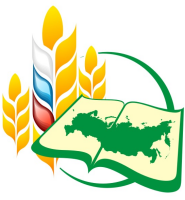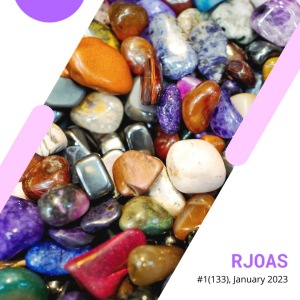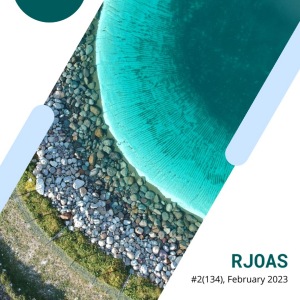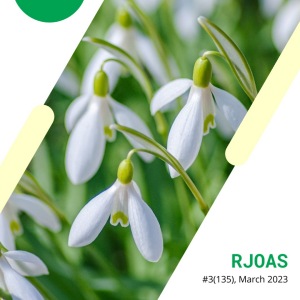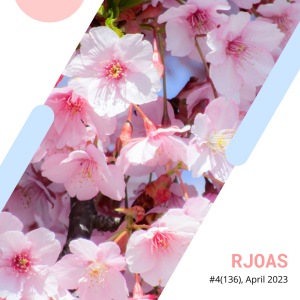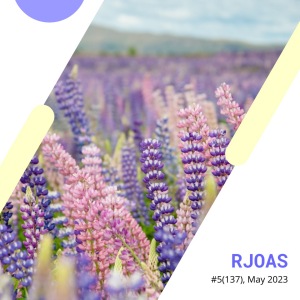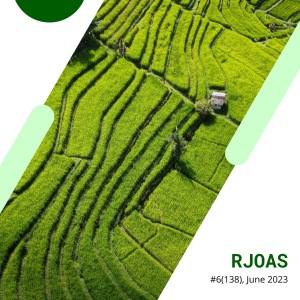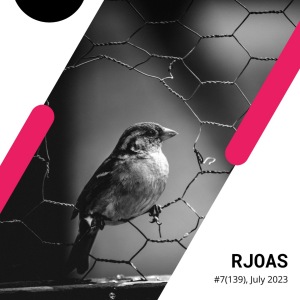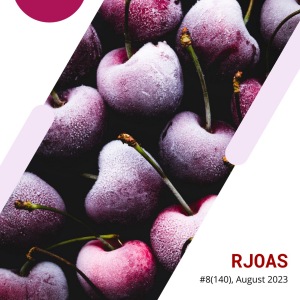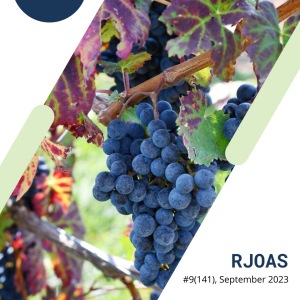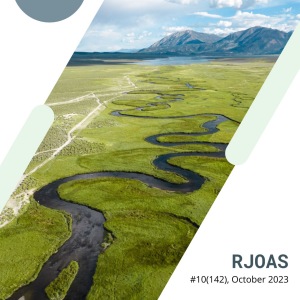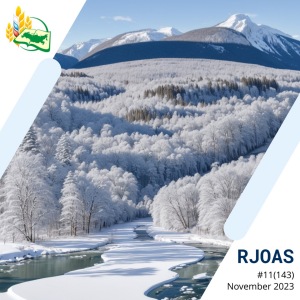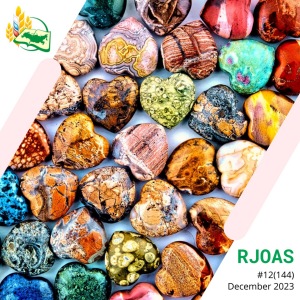ISSUE 4(16), April 2013 |
Pages 3-10
Title
EFFECT OF SPATIAL ARRANGEMENT AND FOLIAR APPLICATION OF GROWTH REGULATING HORMONE ON THE FLOWER HEAD DEVELOPMENT OF COCKSCOMB UNDER THE TROPICAL ARID ENVIRONMENT OF SOUTHERN PUNJAB, PAKISTAN
Author(s)
Arslan Asim*, Dr. Muhammad Maqbool**, Syed Amir Manzoor**, Seema Mahmood***, Ahsan Irshad****, Ali Ammar****
Organization(s)
*Department of Horticulture, Faculty of Agriculture Science and Technology, Bahauddin Zakariya University Multan, Pakistan
**Department of Forestry and Range Management, Faculty of Forestry, Range Management and Wildlife, PMAS - Arid Agriculture University, Rawalpindi, Pakistan
***Institute of Pure and Applied Biology, Bahauddin Zakariya University, Multan, Pakistan
****Regional Agriculture Research Institute, Bahawalpur, Pakistan
Key Words
Celosia cristata; Cockscomb; Flower head; Gibberellin.
Abstract
This investigation was carried out at Experimental Farm, Faculty of Agriculture Science and Technology, Bahauddin Zakariya University, Multan (Pakistan). The objective of this study was to produce high quality Celosia flower head as cut flower under the harsh environmental conditions of southern Punjab by using different plant spacing and different concentrations of Gibberellin (GA3). The seedlings were grown by seed and then transplanted in the field in the first week of August. Seedlings were irrigated daily and fertilized with 100 ppm NPK solution with alternate irrigation before transplanting. Field was well prepared by irrigation and spading twice and adding about 1.5 kg Diammonium phosphate (DAP) at the rate of 150 kg/hectare as phosphorus source, about 2 kg Muriate of Potash (MOP) at the rate of 200 kg/hectare as potash source and about 1kg urea at the rate of 100 kg/hectare as nitrogen source prior to transplanting. Then, seedlings were transplanted in randomized complete block design. There were three levels/concentrations of GA3 (0, 25 and 50 mg/l) and three levels of plant spacing (22.50, 30.00 and 37.50 cm) making overall 9 treatments and these treatments were tested in 3 replications. The analysis of variance indicated that best results were achieved when plant spacing of 37.5cm was used in combination with GA3 application (at the rate of 50 mg/l) where significant increase in chlorophyll contents, leaf area and number of leaves, fresh and dry weight of stem, flower diameter and fresh and dry weight of flower of Celosia cristata were found compared to all other treatments tested.
CrossRef DOI
Pages 11-18
Title
EFFECTIVENESS OF WINTER WHEAT VARIETIES OF WORLD SELECTION IN SOUTH URAL
Author(s)
A. Glinushkin*, O. Beloshapkina**, S. Plygun***, N. Nikolaev*, T. Mishenina*, G. Myasnyankina*, V. Lukyantsev*, S. Dushkin*, E. Karamatova*, A. Vasilyeva*, N. Grigorieva*, A. Solovykh*, A. Rayov*
Organization(s)
*Orenburg State Agrarian University, Orenburg, Russia
**Russian State Agrarian University - Moscow Agricultural Academy named after K.A. Timiryazev, Moscow, Russia
***Orel State Agrarian University, Orel City, Russia
Key Words
Wheat; Varieties; Disease; Puccinia recondite; Productivity; Full-scale mass of grain.
Abstract
Varieties of winter wheat of world selection were studied in the conditions of South Ural. The conducted researches showed that in conditions of a steppe zone of South Ural possibly receiving more than 5,0 t of grain of winter wheat. For a steppe zone of South Ural four effective grades of winter wheat are defined: Kolos 47, Nika, KNIISH 756, Mironovskaya 64.
CrossRef DOI
Pages 19-30
Title
CONTESTATIONS AND CONFLICTING LIFEWORLDS IN CONSERVATION FARMING PRACTICES IN ZIMBABWE: THE EXPERIENCES OF PEASANT SMALLHOLDER FARMERS IN CHIVI SOUTH DISTRICT IN MASVINGO
Author(s)
L. Nhodo, S. Gukurume, O. Mafongoya
Organization(s)
Department of Sociology and Social Anthropology, Great Zimbabwe University, Zimbabwe
Key Words
Agriculture; Sustainable development; Sustainable agriculture; Interface.
Abstract
This study builds on an earlier research done by the researchers in Chivi south district on the impact of conservation farming on food security. The major focus of this study however is on the conflicts and contradictions embedded in conservation farming owing to differential perceptions and life-worlds and implications thereof on sustainable agriculture. It contends that these diverging and conflicting life-words are counter-productive and inimical to the goal of sustainable development in general and sustainable agriculture in particular. The treatise argues that unless and until an interface analysis is implemented to try and sever the impasse, conservation farming just like the preceding farming intervention programs proffered by the state and non-state state actors as the panacea to the incessant food insecurity quagmires bedeviling perennially drought prone regions, will be rendered obsolete. Findings in this study reveal that the conservation farming project is shrouded in perpetual conflicts and struggles pitting several stakeholders involved in the program. The study was grounded in qualitative methodology and adopted unstructured interviews, focus group discussions (FGDs) and expert interviews as the main data gathering techniques. Norman Long's Actor Oriented Approach (AOA) was the theoretical lens used in the research as the major analytical framework to understand and bridge the impasse for conservation farming to have meaning to the stakeholders and leave up to its hype in rural development.
CrossRef DOI
Pages 31-34
Title
GROWTH TREND OF RICE DEMAND AND SUPPLY IN NIGERIA: AN INVESTMENT OPPORTUNITY FOR YOUTH AND WOMEN EMPOWERMENT
Author(s)
Oyakhilomen Oyinbo, Maiyaki Abdullahi Damisa, Grace Zibah Rekwot
Organization(s)
Department of Agricultural Economics and Rural Sociology, Ahmadu Bello University, Zaria, Nigeria
Key Words
Growth; Demand; Supply; Rice; Women; Youth.
Abstract
This study was carried out to determine the instantaneous and compound growth rates of rice demand and supply in Nigeria over the period of 1970 to 2011 and its implication for empowering youths and women. Time series data on the aggregate rice demand and supply obtained from the database of United State Department for Agriculture (USDA) foreign agricultural service were utilized in this study. A growth rate model was employed to analyse the time series data and the result of the analysis showed that the instantaneous and compound growth rates (7.5% and 7.8%) of rice demand were higher than that of rice supply (6.5% and 6.7%) and this indicates that the incidence of demand-supply gap for rice in Nigeria has been an existing trend over the years and the trend would continue if appropriate measures are not taken despite the country's huge potential for rice production to attain self-sufficiency. The implication of this finding is that the untapped potential of Nigeria for rice production should be exploited for the empowerment of youths in the area of rice production and women in the area of rice processing.
CrossRef DOI
Pages 35-45
Title
WATER-ECONOMIC PROBLEMS IN NORTHEASTERN MONTENEGRO
Author(s)
Goran Rajovic, Jelisavka Bulatovic
Organization(s)
College of Textile Design, Technology and Management, Belgrade, Serbia
Key Words
Northeastern Montenegro; Water; Population; Industry; Agriculture; Water supply; Hydropower; Tourism and recreational use; Environmental protection.
Abstract
The paper discusses the problems of water economic northeastern Montenegro municipalities Berane, Andrijevica and Plav. It points to the problem of exploitation of water, protection of water and water protection. Within exploit water resources, the possibilities of water supply of population and industry, water supply, agriculture, hydropower exploitation, tourism and recreational use. Current and future use of water resources considered GeoScape, requires a new approach, which should be in accordance with the concept of active protection of the environment.
CrossRef DOI













